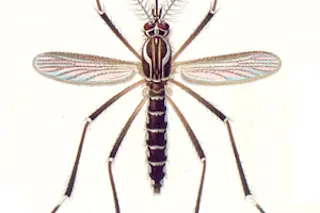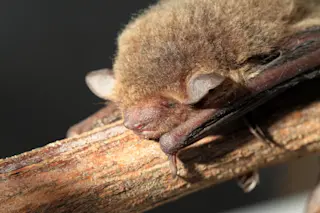Ithaca, NY—Flying around on a miniature leash made from a single strand of her human handler’s hair, a female Aedes aegypti mosquito gravitates toward the love song of a prospective mate. As she flies she calls to him by modulating the whine of her fluttering wings. But “he” is merely an iPod earbud playing mosquito tunes. By means of this strange, sterile courtship, Cornell University scientists hope to breed control of mosquito-borne disease.
“For a long time, people just studied how to kill the mosquitoes and not really anything about their mating behavior,” laments Cornell’s Lauren Cator, whose long, blond tresses supply the tethers for her team’s experiments. “But now more and more people are interested in learning about basic mosquito biology because, frankly, extermination is not working out so well in terms of disease control.” Cator and her colleagues are particularly interested in the painful and often fatal viruses ...















